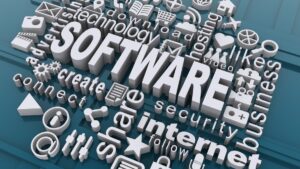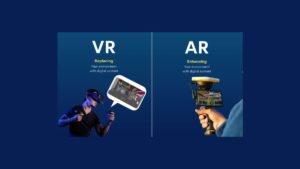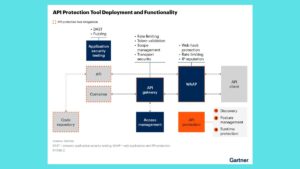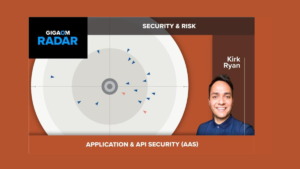HR Technology in 2025: GenAI, Analytics, and Skills Tech

As we look towards 2025, the landscape of Human Resources (HR) technology is evolving at a rapid pace, driven by advancements in Generative AI (GenAI), analytics, and skills tech. These innovations are reshaping how organizations manage talent, make decisions, and develop their workforce. This blog explores the transformative potential of these technologies and their implications for the future of HR.
1. The Rise of Generative AI in HR
Generative AI, a subset of artificial intelligence that can generate new content and ideas, is poised to revolutionize HR processes by automating tasks, enhancing decision-making, and creating personalized experiences for employees.
- Automating Routine Tasks: GenAI can streamline administrative tasks such as resume screening, interview scheduling, and onboarding processes. By automating these repetitive tasks, HR professionals can focus on more strategic activities that drive business value.
- Example: AI-powered chatbots like Mya and Olivia are already being used to handle initial candidate interactions, reducing the time and effort required for recruitment.
- Enhanced Talent Acquisition: GenAI can analyze vast amounts of data to identify patterns and predict candidate success. This allows HR teams to make more informed hiring decisions and reduce bias in the recruitment process.
- Example: Tools like HireVue and Pymetrics use AI to assess candidate potential based on behavioral and cognitive data, ensuring a better fit for the organization.
- Personalized Employee Experiences: GenAI can create personalized learning and development programs tailored to individual employee needs and career goals. This customization enhances employee engagement and retention.
- Example: Platforms like EdCast and Degreed leverage AI to recommend personalized learning paths based on an employee’s skills, interests, and career aspirations.
2. Advanced Analytics for Strategic Decision-Making
Analytics has been a cornerstone of HR for years, but the capabilities are expanding as data becomes more accessible and sophisticated. In 2025, advanced analytics will be central to making data-driven decisions that align with organizational goals.
- Predictive Analytics: Predictive analytics will enable HR teams to forecast future workforce trends, such as employee turnover, skill shortages, and workforce diversity. This foresight allows organizations to proactively address challenges before they become critical issues.
- Example: Predictive tools like Visier and Crunchr can analyze historical data to predict which employees are at risk of leaving, allowing HR teams to intervene with targeted retention strategies.
- Employee Sentiment Analysis: Analyzing employee feedback and sentiment in real time can provide valuable insights into the overall health of an organization. This analysis helps HR teams identify areas for improvement in workplace culture and employee satisfaction.
- Example: Sentiment analysis tools like Qualtrics and Glint can analyze employee survey data and social media posts to gauge employee morale and identify potential issues.
- Diversity and Inclusion (D&I) Metrics: Analytics will play a crucial role in measuring and improving diversity and inclusion within organizations. By tracking D&I metrics, HR teams can ensure that their initiatives are effective and that the organization is fostering an inclusive environment.
- Example: D&I platforms like Inclu and Trusaic offer analytics tools that help organizations track and improve their diversity metrics, ensuring that their workforce reflects a broad range of perspectives.
3. Skills Tech: Bridging the Skills Gap
As the nature of work continues to evolve, so does the need for upskilling and reskilling the workforce. Skills tech is emerging as a critical component of HR technology, enabling organizations to bridge the skills gap and prepare employees for the future of work.
- Skill Mapping and Assessment: Skills tech platforms can assess the current skill levels of employees and map them against the skills needed for future roles. This process helps organizations identify skill gaps and develop targeted training programs.
- Example: Platforms like Fuel50 and Skillsoft offer tools that assess employee skills and recommend learning paths to close any gaps, ensuring that employees are prepared for future challenges.
- Personalized Learning Paths: Leveraging AI and machine learning, skills tech platforms can create personalized learning paths that align with an employee’s career goals and the organization’s needs. This customization ensures that employees receive the most relevant and impactful training.
- Example: Personalized learning platforms like Coursera and LinkedIn Learning use AI to recommend courses and training programs based on an employee’s skills and interests.
- Continuous Learning and Development: In 2025, continuous learning will be a key focus for organizations. Skills tech platforms will enable employees to engage in ongoing learning and development, ensuring that their skills remain relevant in a rapidly changing work environment.
- Example: Platforms like Udacity and Pluralsight offer a wide range of courses and certifications that allow employees to continuously update their skills and stay competitive in the job market.
4. Integrating GenAI, Analytics, and Skills Tech
The integration of GenAI, analytics, and skills tech will be crucial for organizations looking to maximize the potential of HR technology. By combining these technologies, HR teams can create a comprehensive strategy that addresses all aspects of talent management.
- Holistic Talent Management: The integration of these technologies allows for a holistic approach to talent management, from recruitment and onboarding to learning and development. This approach ensures that organizations have the right talent in place to achieve their strategic objectives.
- Example: An integrated HR platform like Workday can combine AI, analytics, and skills tech to manage the entire employee lifecycle, from hiring to retirement.
- Data-Driven Decision-Making: The combination of GenAI and analytics allows HR teams to make data-driven decisions that are backed by insights and predictive models. This capability enables organizations to stay ahead of workforce trends and proactively address challenges.
- Example: HR teams can use AI-powered analytics to predict future skills needs and develop targeted training programs that prepare employees for emerging roles.
- Employee Engagement and Retention: The integration of personalized learning and development programs with AI-driven insights ensures that employees remain engaged and motivated. This approach not only enhances employee satisfaction but also improves retention rates.
- Example: By offering personalized learning paths and using AI to track employee progress, organizations can create a more engaging and fulfilling work environment that retains top talent.
5. Conclusion
As we approach 2025, the landscape of HR technology is set to undergo significant changes, driven by advancements in GenAI, analytics, and skills tech. These technologies offer immense potential to transform how organizations manage talent, make decisions, and develop their workforce. By embracing these innovations, HR teams can create a more agile, data-driven, and employee-centric approach to talent management, ensuring that their organizations are well-positioned to thrive in the future.
Organizations that invest in these technologies today will be better equipped to navigate the challenges of tomorrow, making HR a strategic partner in achieving long-term business success. The future of HR is not just about managing human resources; it’s about leveraging technology to unlock the full potential of the workforce and drive organizational growth.







